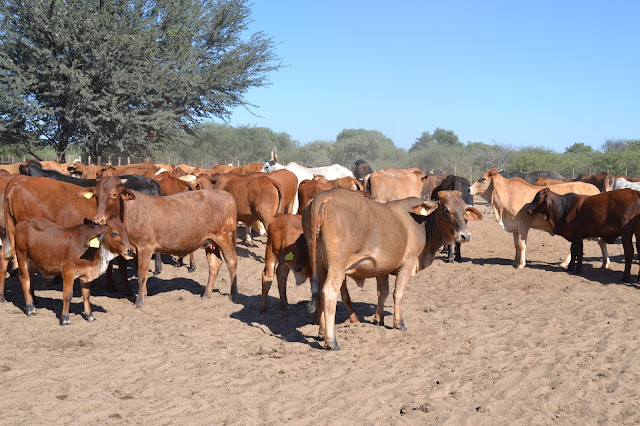I
have been noticing a few calves have developed warts recently.
What are warts?
Warts
are unsightly skin growths caused by a virus and can be transmitted from one
animal to another and it only affects cattle. The virus responsible for warts is papilloma
virus. The growths often appear quickly and grow swiftly into rough-looking or
smooth shaped mass. They range from
being small to being very large. They
mostly appear on the head, neck, shoulders, and opening of vagina, teats or
penis of animal.
They
can be quiet infectious. The virus may become a continual problem in a herd due
to long incubation periods. After the
animal is infected, it can take about 2 months before the warts appear. That is why it is hard to control.
Warts
can suddenly appear in a group of calves or weaners at once. They mostly are common in calves because they
have not developed immunity to the virus.
They crop up in places were the skin has been broken, allowing the
virus to enter the deep layers of the skin.
They can also develop in ears after tagging, or any other body part where
the skin is punctured or scraped.
Transmission
The virus can be transmitted from one animal
to another by instruments that puncture skin, needles, tagging and castrating
tools. The virus is also transmitted by flies that feed on first one animal, than
another.
`
Treatment
The
good news is that it is nothing serious.
The animal’s body need time to develop antibodies against the virus and
build an immune defence against it. As a result, the best treatment for warts is
TIME.
It
is also believed that farmers much pinch or scrap some warts with a plier. In the process, blood vessels within the
warts are ruptured. The causative virus
than enters the animal’s blood stream and immunity build-up happens faster. The procedure is not very painful because
warts do not have nerve endings.
It
is also important to isolate the animal when you first notice the warts. This
is not much help, because of the long incubation periods, that animal may have
infected others by the time the farmer notices the warts.
If
the infection is very severe on your farm, than a vaccine should be administered. You will need to sample the warts. The warts get minced, the virus they contain
is killed with formalin and then the mixture is filtered and put into a
vaccine.





























